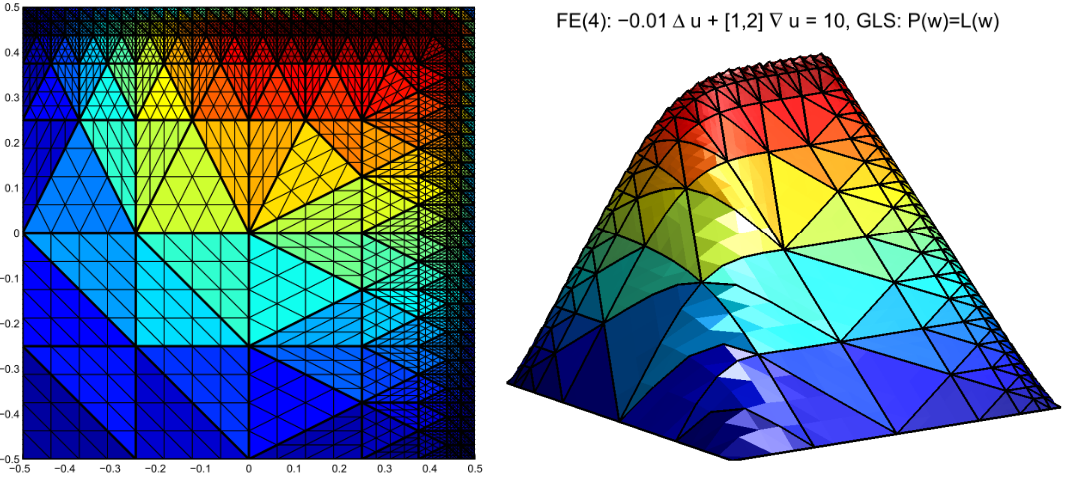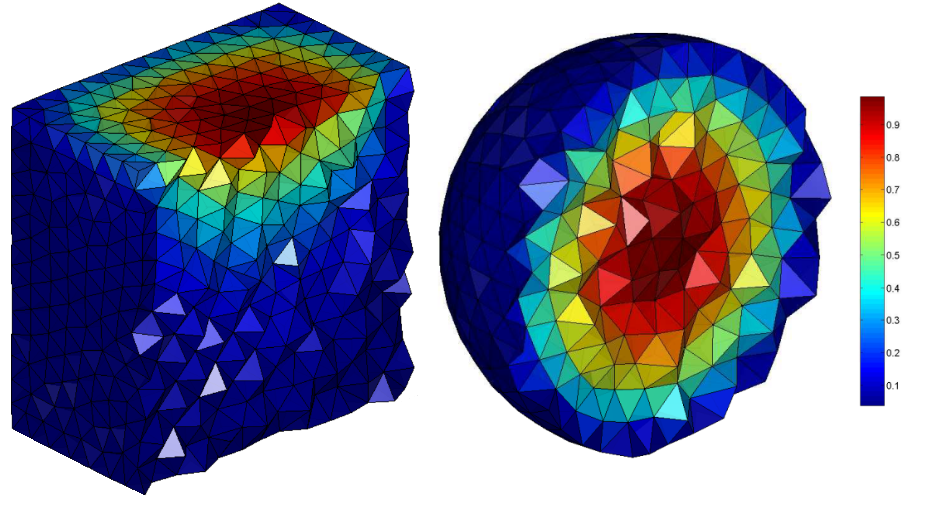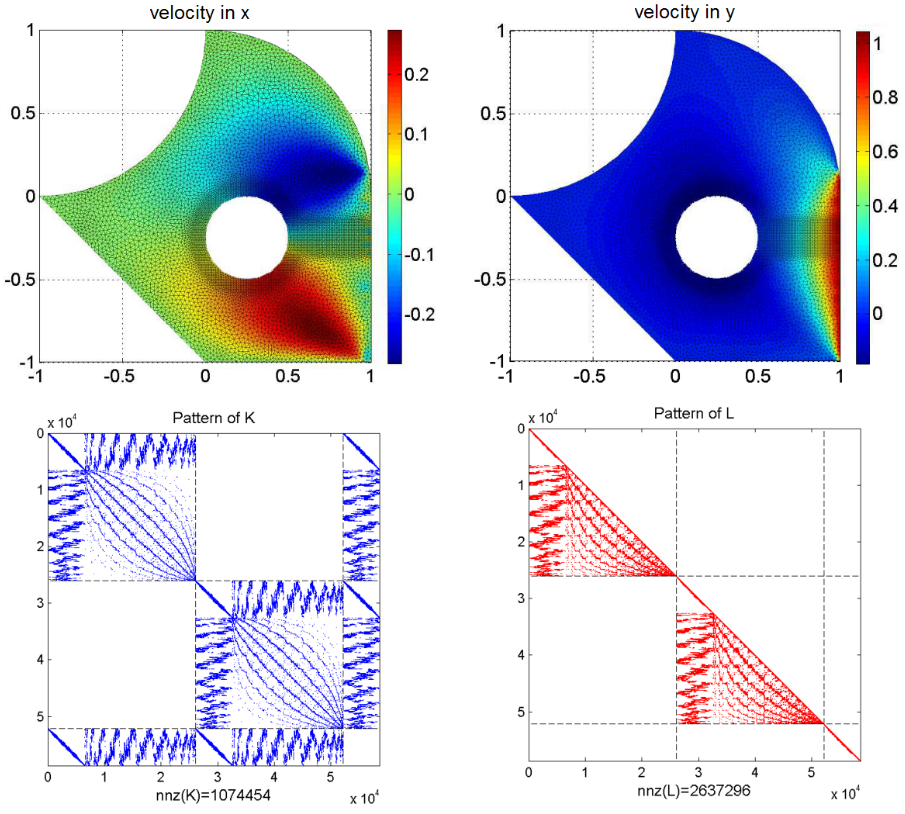Figure 1: Examplary solution of a Poisson problem on a pizza-shaped domain.
The solution exists only in a weak sense due to a singularity of the gradient in the concave edge.
---

Figure 2: Convection-diffusion solution on a hierarchical mesh with polynomial shape functions of fourth degree.
We used a Galerkin/least-squares stabilization and Gaussian quadrature of order 7.
---

Figure 3: Two exemlary Poisson solutions in 3D.
Left: Inhomogeneous Neumann problem. Right: Homogeneous Dirichlet problem.
---

Figure 5: A lid-diven cavity numerical experiment for the Stokes equations. The subfigures show:
-
Top: Velocity in x and y direction of the flow field for an outer shear force at the right wall.
-
Bottom: Sparsity structures of the saddle matrix and its block preconditioner.
The blocks of the preconditioners are obtained each with an incomplete Cholesky factorization.